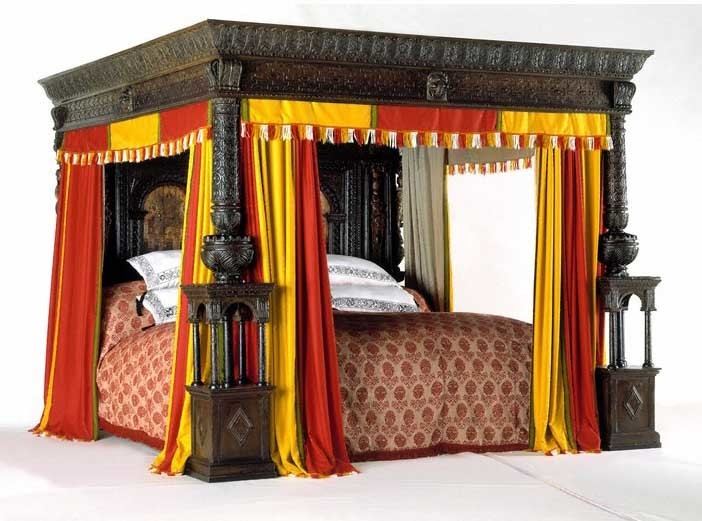 | ||
The Great Bed of Ware is an extremely large oak four poster bed, carved with marquetry, that was originally housed in the White Hart Inn in Ware, England. Built by Hertfordshire carpenter Jonas Fosbrooke in 1580, the bed measures 3.38m long and 3.26m wide (ten by eleven feet) and can 'reputedly... accommodate at least four couples'. Many of those who have used the bed have carved their names into its posts.
Like many objects from that time, the bed is carved with patterns derived from European Renaissance ornament. Originally it would have been brightly painted, and traces of these colours can still be seen on the figures on the bed-head. The design of the marquetry panels is derived from the work of Dutch artist Hans Vredeman de Vries (1527–1604) and the panels were probably made by English craftsmen working in London in the late Elizabethan period. The bed-hangings are modern re-creations of fabrics of the period.
By the 19th century, the bed had been moved from the White Hart Inn to the Saracen's Head, another Ware inn. In 1870, William Henry Teale, the owner of the Rye House, acquired the bed and put it to use in a pleasure garden. When interest in the garden waned in the 1920s, the bed was sold. In 1931, it was acquired by the Victoria and Albert Museum in London.
From April 2012, the bed was exhibited for a year in Ware Museum, on loan from the Victoria and Albert Museum.
